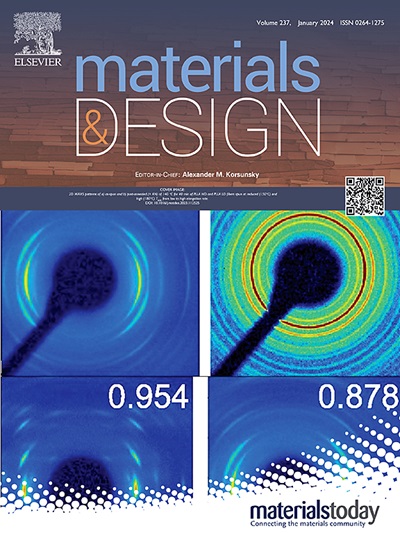Millimeter-wave 3D printing metasurface filtering crossover based on a single groove gap waveguide cavity
IF 7.6
2区 材料科学
Q1 MATERIALS SCIENCE, MULTIDISCIPLINARY
引用次数: 0
Abstract
A millimeter-wave (mm-wave) 3D-printing metasurface filtering crossover based on groove gap waveguide (GGW) structure is proposed in this letter. Firstly, the metasurface composed of electromagnetic bandgap elements in GGW technology is designed and analyzed. This configuration effectively mitigates radiation and electromagnetic wave leakage. The upper part of the GGW resonator features a groove structure with periodic pins distributed, while the lower part consists of a metal groove structure. Subsequently, by incorporating resonant irises, the device order and bandwidth are increased. Transmission zeros (TZ) is generated by cross-coupling between the GGW resonator and source. Furthermore, by adding an L-shaped capacitive stub at one end of each port, another TZ is created, further enhancing the frequency selectivity of the filtering crossover. To verify the design, a third-order filtering crossover operating in the Ka band is fabricated using 3D printing technology. The measured results show excellent agreement with the simulations. The final filtering crossover achieves a 3-dB fractional bandwidth of 4.8 %, a return loss better than 19.5 dB, and an in-band isolation greater than 32 dB.

求助全文
约1分钟内获得全文
求助全文
来源期刊

Materials & Design
Engineering-Mechanical Engineering
CiteScore
14.30
自引率
7.10%
发文量
1028
审稿时长
85 days
期刊介绍:
Materials and Design is a multi-disciplinary journal that publishes original research reports, review articles, and express communications. The journal focuses on studying the structure and properties of inorganic and organic materials, advancements in synthesis, processing, characterization, and testing, the design of materials and engineering systems, and their applications in technology. It aims to bring together various aspects of materials science, engineering, physics, and chemistry.
The journal explores themes ranging from materials to design and aims to reveal the connections between natural and artificial materials, as well as experiment and modeling. Manuscripts submitted to Materials and Design should contain elements of discovery and surprise, as they often contribute new insights into the architecture and function of matter.
 求助内容:
求助内容: 应助结果提醒方式:
应助结果提醒方式:


